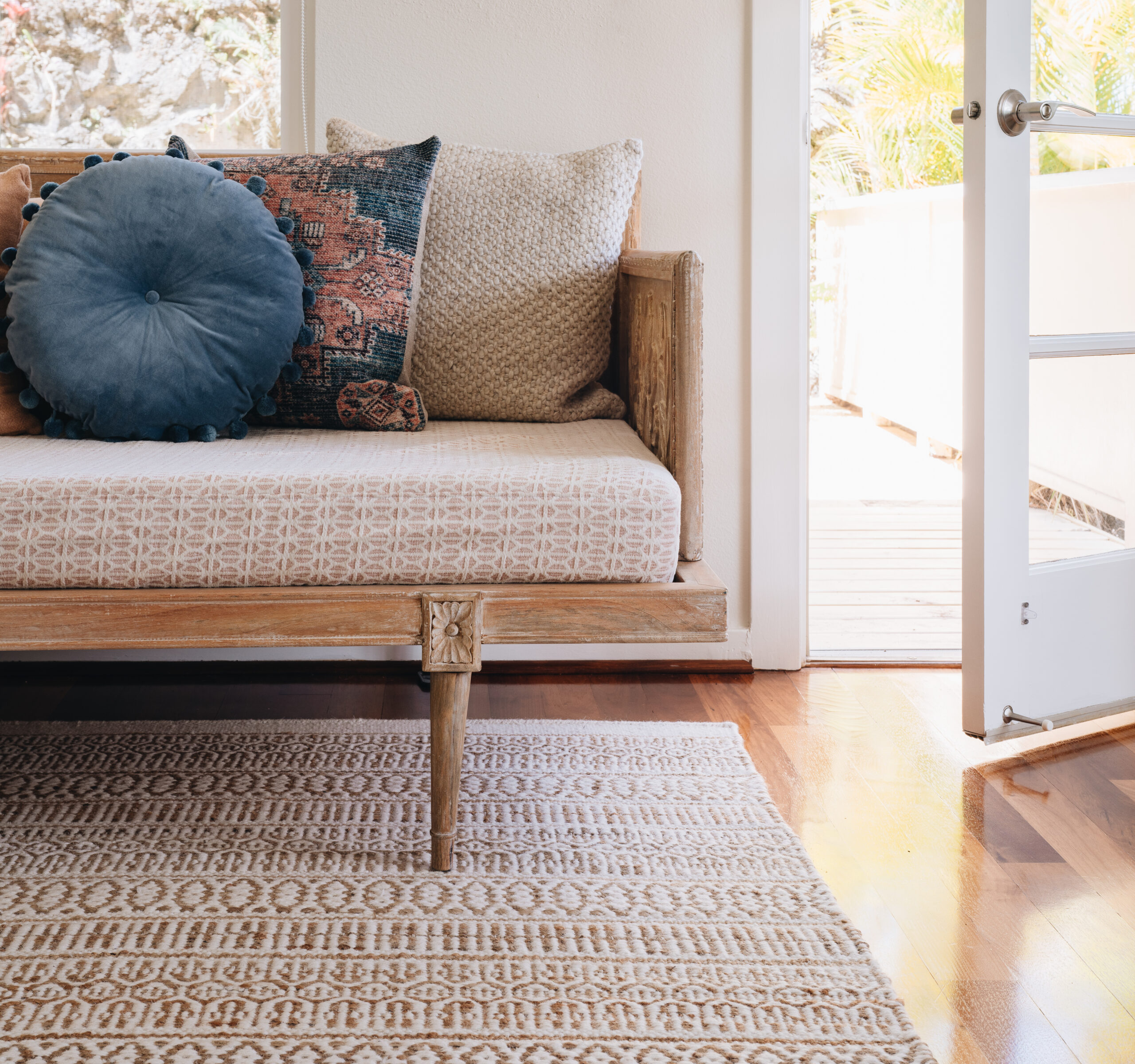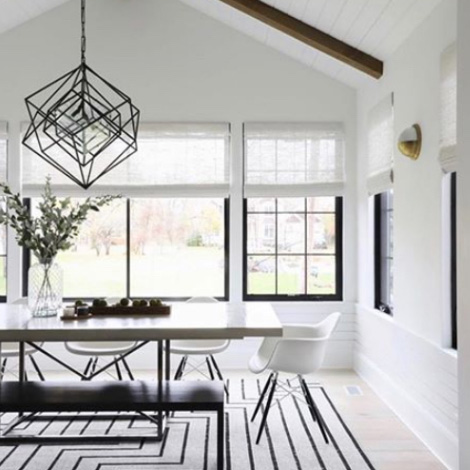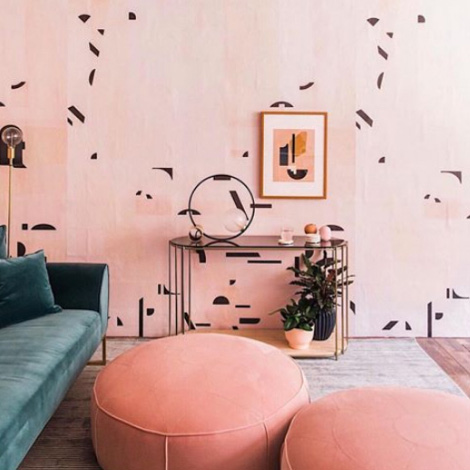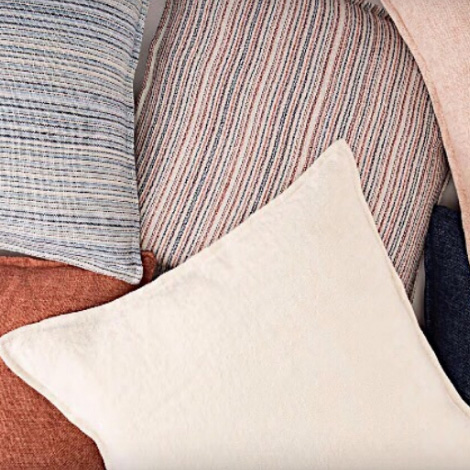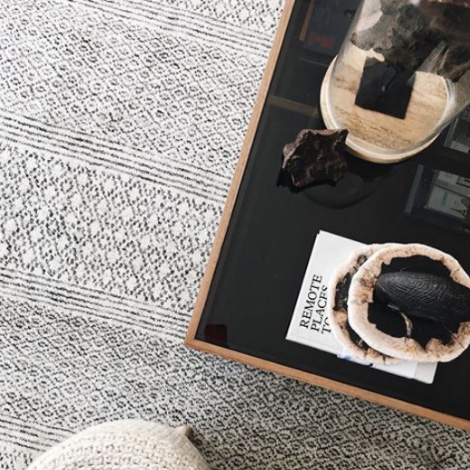It’s all about layering. From texture variations to focal points, layering rugs and accessories in a space creates showstopping visual interest. With help from seven interior design experts, Jaipur Living breaks down the art of layering.
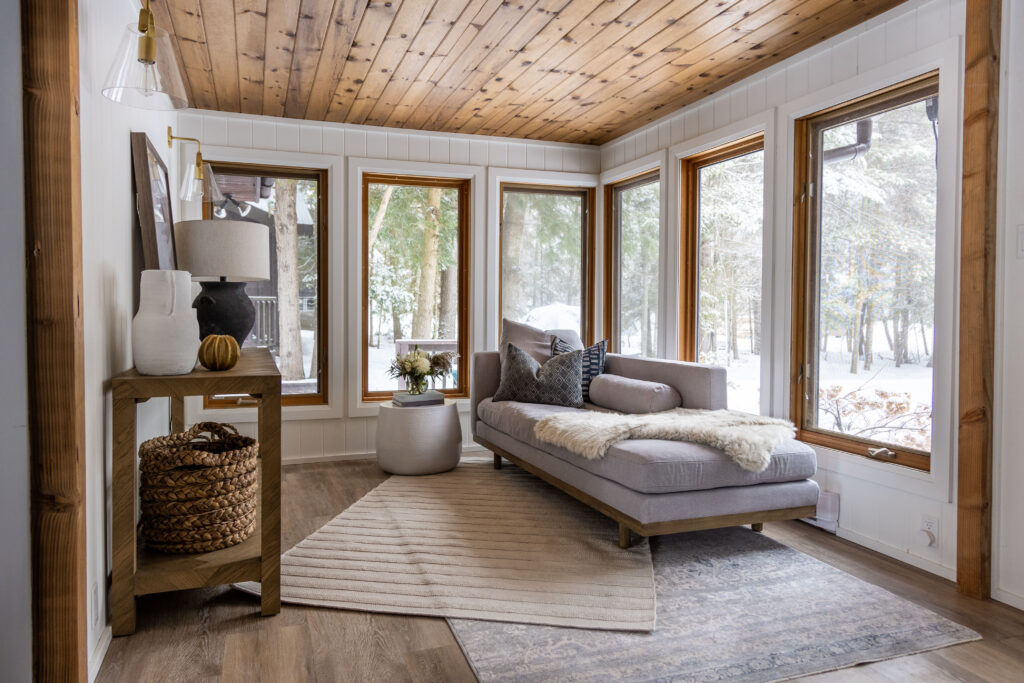
ACM Designs layered the Ballad and Santa Barbara collections in this sunroom. Photography by Eleanor Dobbins
Soul Mate
It’s all about the mix—mixing vintage with modern, vibrant patterns with calming neutrals, and natural textures with serenely soft fabrics. “Layering rugs is one way to create coziness in a room that doesn’t allow for much furniture,” says the team at ACM Designs. “Incorporating angled rugs lets you play with lines and helps draw the eye around the space.” For their pro tip, the designers recommend sourcing several rugs that complement the room design. “Try angling the top rug at a 45-degree angle. Not only will this add additional pattern and texture to the room, but it will also fill the space, turning an empty entryway into a cozy reading space.”
See also: 9 Designer Favorite Artisan-Made Rugs
For interior designer Kate Lester‘s collaboration with Jaipur Living, she pulled inspiration from her love of vintage rugs and modern aesthetic. Selecting from her own archive of vintage pieces, the designer’s Harman and Harman Natural collections are an ode to effortless layering. “What I love about the two collections is that they’re interchangeable,” she says. “They pair well together not only physically right on top of each other—where you could layer a natural, then put one of the vintage-inspired pieces on top in a smaller scale—but you could also layer them in the same room.”
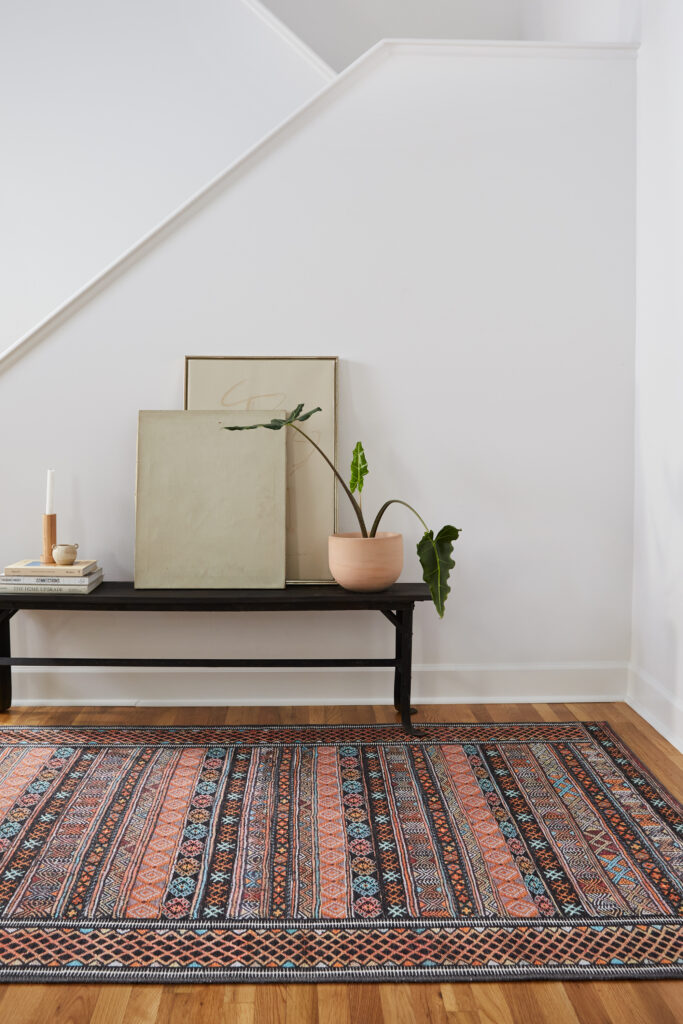
Kate Lester‘s Harman collection for Jaipur Living celebrates the art of layering.
Grand Dame
Every interiors space needs a design superstar. When blended with complementary decor, it delivers a curated aesthetic. “I like to design layered interiors, which used together tell a story,” says interior designer Lisa Mende of Lisa Mende Design. “I often mix antiques or vintage finds to soften the patina of new products. Sometimes I start a project with the rug and other times I allow the rug to simply ground the room in a neutral palette.”
For Lester, it’s all about infusing character into room designs. “When you’re building a space and you want to infuse character and a sense of history, you do want to add in vintage pieces. There’s just a fine line you have to walk, ” she says. “You want to bring in a little bit of old, but you have to balance it with the new. I love mixing a contemporary light fixture with a vintage rug. Then maybe everything else is kind of streamlined and those pieces are the juxtaposition and they’re telling a story to each other. If you go all vintage, it just looks old and sad. And if you go all new, it looks like page 10 from a catalog.”
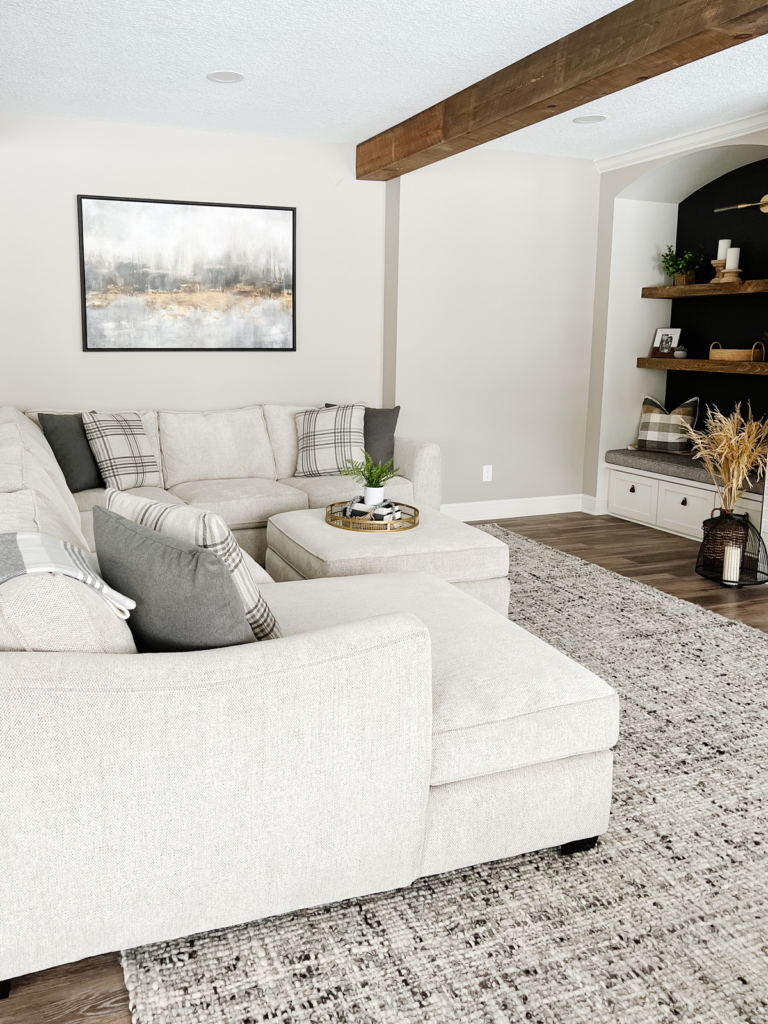
The Cambridge collection provides a focal point to this Interior Impressions-designed living room. Photography by Mackenzie Merrill Photography
Wide Open Spaces
The focal point is crucial when planning an open-concept space. Consider a large-scale rug to anchor the room or a series of midsize rugs to create cozy, welcoming design moments in an otherwise overwhelming square footage. “In an open-concept setting, we like to use rugs to help anchor the space and create definition from one space to another. Naturally, rugs also help bring texture to the space without being overbearing,” says Amy Leferink of Interior Impressions.
See also: 5 Renovations Trends On The Rise
When concepting a larger space, Lester suggests layering the texture of a natural rug with the pattern and vibrancy of a vintage or vintage-inspired rug. “I like to say if you’re going to go with a 10-foot by 12-foot rug, then you go with a 5-foot by 8-foot above it. You’re going about half the width to layer it,” she says. “I encourage people to go as big as you can with your colorful, more patterned rug and use layering as an option if buying the larger size vintage rug isn’t available to you.”
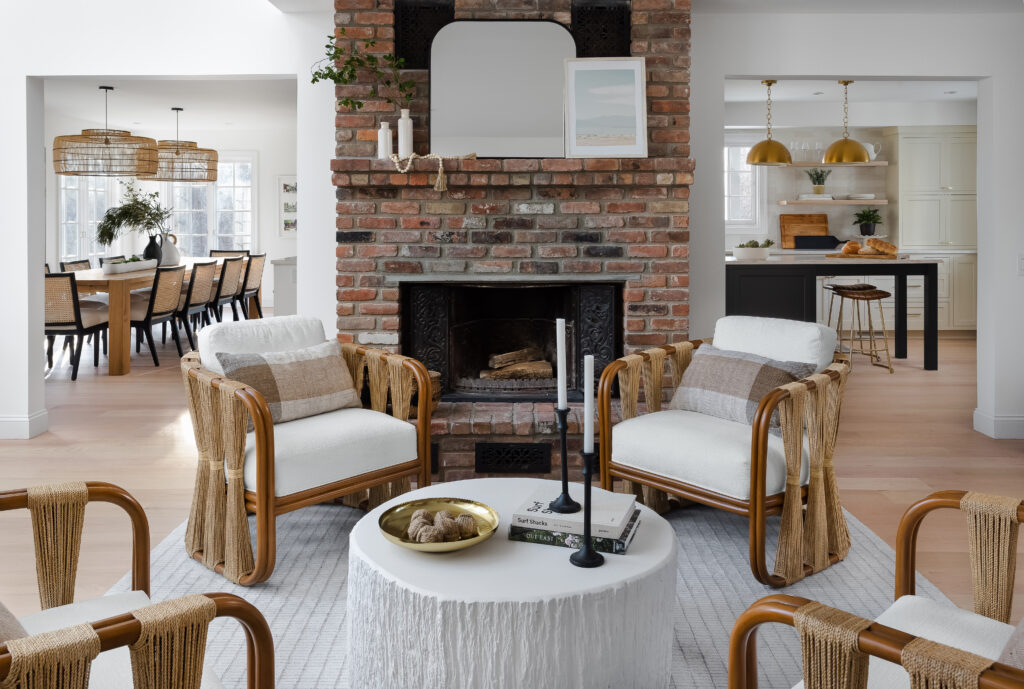
Interior designer Rene Wirth sets the focal point in this room with the Grove collection. Photography by Steven Bruno
Texture Play
Employ texture and material variations to liven up a room. “To create the perfect space that is captivating and welcoming,” says Rene Wirth of Wirth Design Group, “we start with a focal point. Based on that item we pull in colors, textures, and different scaled patterns in fabrics, rugs, and materials to create the perfect balance and harmony between materials.” Adds Jennifer Levy of CAVdesign, “Layering and textures are what bring life to the space. And knowing that I am sourcing from a company that uses sustainable textile production practices brings freedom and fun to that part of the process.”
See also: 11 Questions On The Future Of Socially Conscious Design
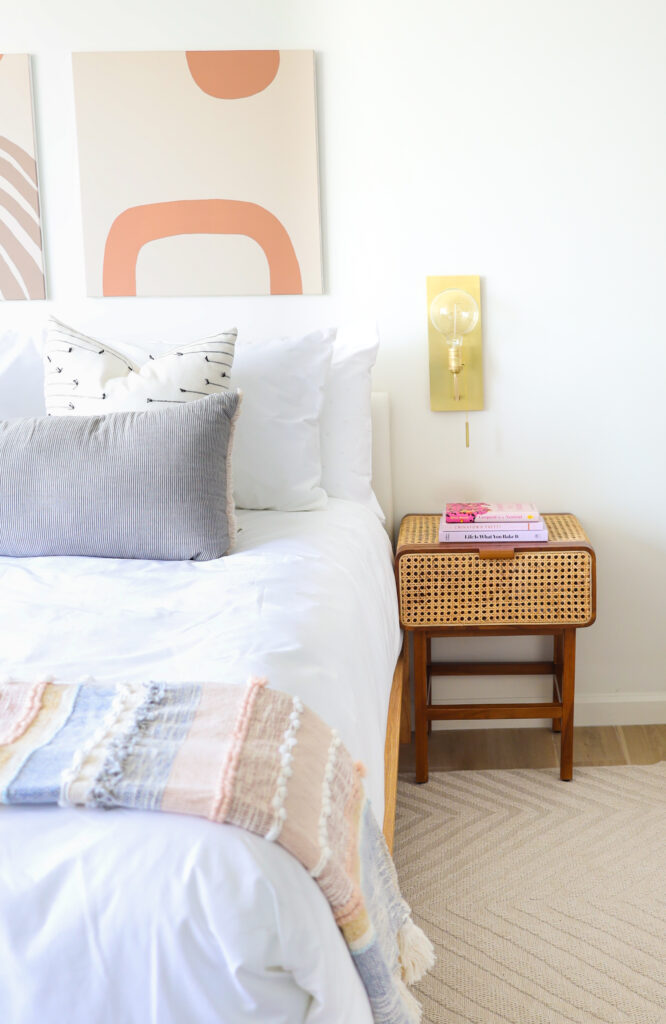
Shaolin Low shows off her layering skills with the a throw, decorative pillows, and the Fresno collection. Photography by Bethany Suarez, Suarez Creative House
Crowning Jewel
Use layered interiors as a storyboard. “I like to layer pillows using a base pattern or color and then build off from there. You don’t want to overkill with pillows, but it’s nice to have a few with different sizes and shapes,” says Shaolin Low of Studio Shaolin. Whether you begin with a statement-making rug or a stand-out piece of art, carefully choose your wow factor—as dubbed by Kate Lester Interiors—then build from there. “Whatever it is,” Lester says, “find it, invest in it, love it, showcase it, and you’ll never regret it.”


